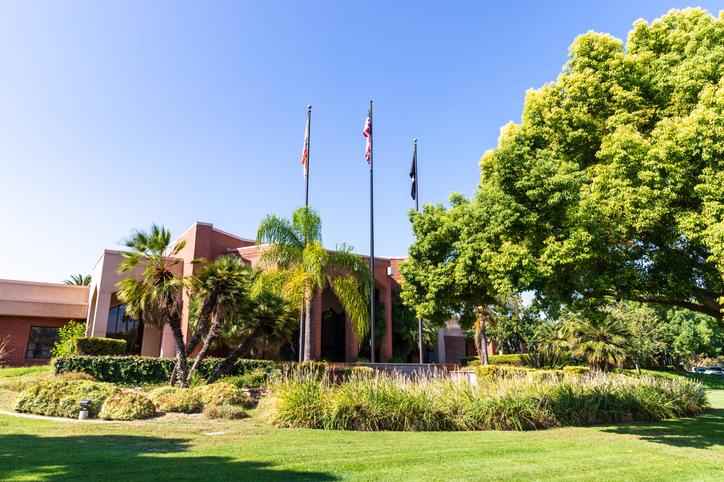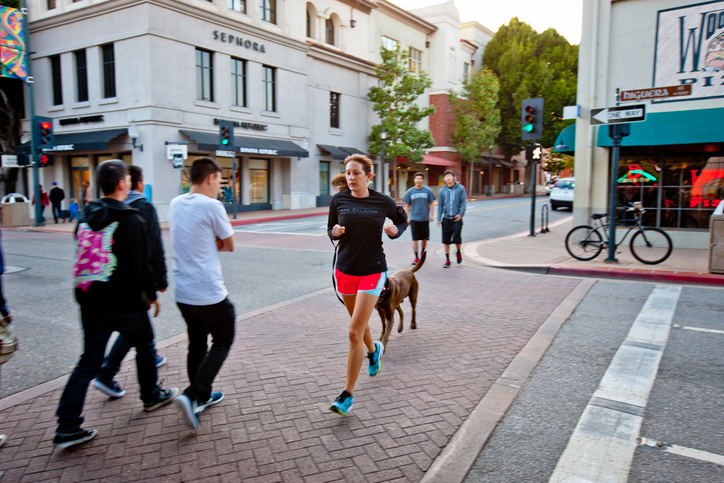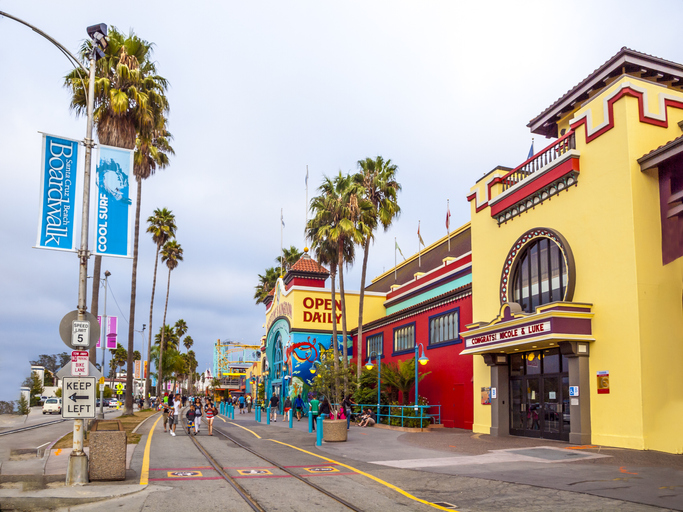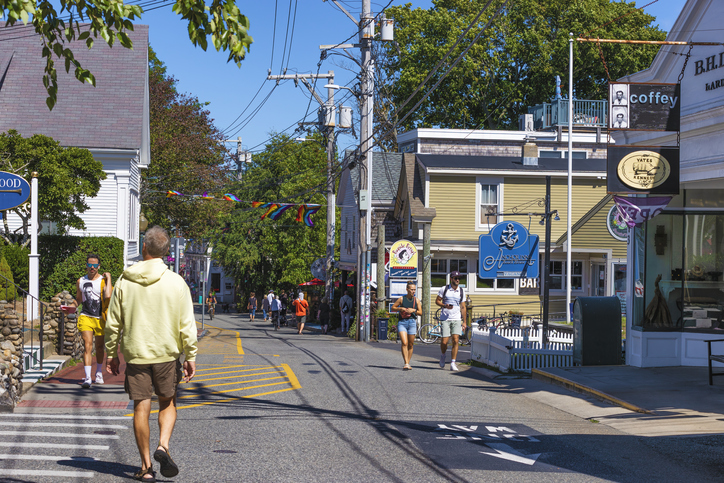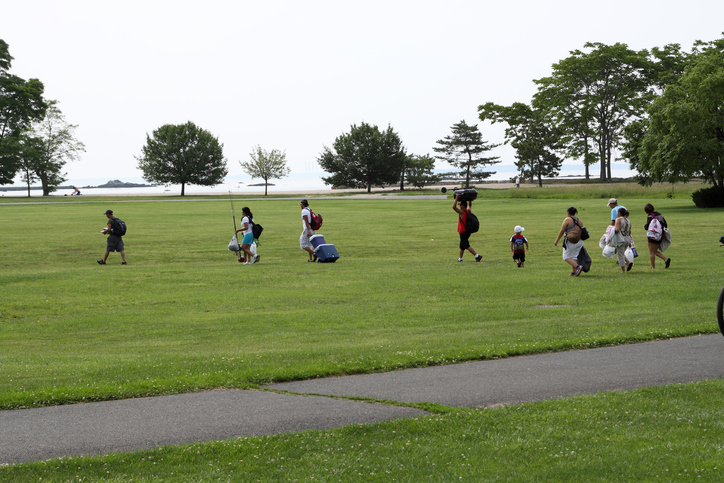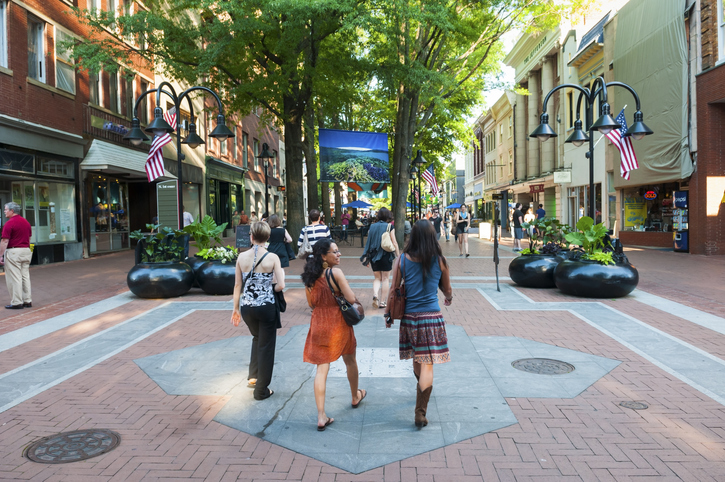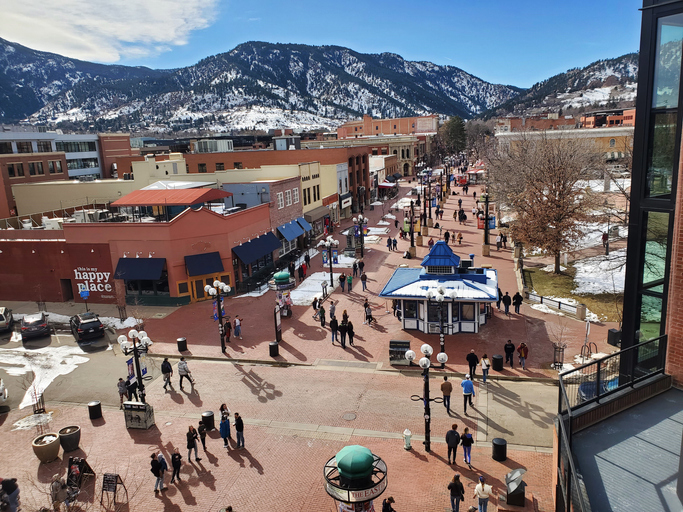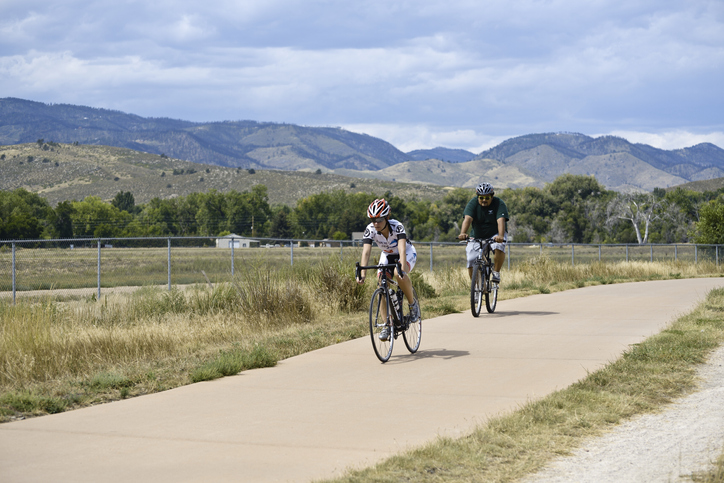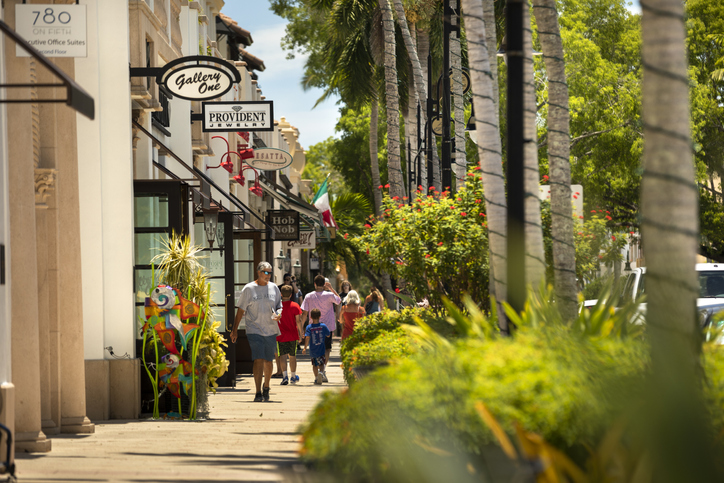
Top 10 Blue Zones in America for 2024
We Actually Found 11 for 2024!

Living a longer, healthier life is more attainable than you might think. When we look at America, and our world, some areas emerge with populations who are achieving ages well beyond typical lifespans, while still being able to do the things they love. Want to find out how?
First off, what is a Blue Zone? Globally, Blue Zones can be defined as areas containing a concentration of individuals who have achieved longevity and vitality such that they are living to nearly 100 years old while having an above-average quality of life. In general, we identified 6 lifestyle factors that are common among these populations and are characteristic of Blue Zones. These include natural movement, plant-based diets, having a sense of purpose or “ikigai”, following the 80% rule, having community, and managing stress. Hence, when it came to defining the top 10 Blue Zones in America, these are the factors we assessed.
Find What You Need
How Did We Determine This List?
We thoroughly researched each location’s access to whole and plant-based foods, their levels of physical activity, the presence of community, sleep levels, and life expectancy to determine which cities aligned with the ideals of other Blue Zones across the world. Moreover, these cities stood out statistically for their low obesity rates, the high percentage of adults who reported eating healthy all day long, as well as the low percentage of adults who reported daily stress.
Lastly, we evaluated happiness levels based on the National Geographic Gallup Special/Blue Zones Index. This report assessed factors such as the walkability and people-friendly design of the city, access to nature, civic engagement, cleanliness of the environment, and access to healthy food, to ultimately determine the happiest cities in America. Hence, we picked these 10 cities based on these factors.
These cities contain aspects of health and longevity that stand above the rest of the United States and mirror the qualities of established Blue Zones across the world. But what does this mean for America? In general, are Blue Zones in the US increasing? Many of you may want to discover how the ideals in your community align with these cities. So, with all of this data, let’s talk about the top 10 places in America becoming Blue Zones, and see where your city may rank.
The Top 10 “Blue Zones” in America
1. Loma Linda, CA
Loma Linda, California has emerged as one of the 5 officially identified blue zones in the world as well as in America. This community is made up of Seventh-day Adventists with over 9,000 people. This community is extraordinary not only for their expectancy to live nearly 10 years longer than most Americans but also for their focus on exercise and community. Individuals in this community get regular daily exercise and prioritize volunteering as a way to not only establish their daily sense of purpose but also promote shared values in their community. Moreover, this is a largely vegetarian community that focuses on increasing plant intake, eating in moderation, and drinking lots of water. These factors combined make Loma Linda an ideal example of a Blue Zone, and the number one city on our list.
2. San Luis Obispo, CA
San Luis Obispo is a California city that not only made the list for one of the top 5 happiest cities in America but also has impressive health statistics. The city presents an obesity rate of only 24.5%, reports 72.0% of adults who eat healthy all day, and only 40.2% of adults with daily stress. Moreover, SLO has made extraordinary strides to improve the living environment of the city in recent years and is featured as an ideal example of a Blue Zones Project, The goal of these alterations in San Luis Obispo was to develop a downtown city area that minimized the presence of unhealthy habits and instead promoted quality living. For example, the city implemented anti-smoking policies, prohibited drive-through restaurants, increased the presence of green spaces and farmers markets, modified walking and biking paths for pedestrians, and more. This made San Luis Obispo an easy addition to our list.
3. Santa Cruz, CA
California is a large state with a high presence of vegetarian restaurants and walkable communities. However, Santa Cruz emerges as an exemplary city for a Blue Zone. Preservation and restoration efforts in this city over the last 50 years have allowed for the presence of prevalent community gathering points, a bustling, prestigious, and walkable college community, and a strong tourist attraction. Moreover, in 2011, Santa Cruz was ranked as the fifth Most Artistic City in America, as well as the second Healthiest City in America in 2012. This suggests the community’s strong focus on art, health, and expression within our nation. Regarding comparative statistics, Santa Cruz-Watsonville was found to have an obesity rate of only 20.2%. Moreover, this city only reported daily stress from 44.0% of adults, 74.2% of whom reported eating healthy all day long. It was also ranked among one of the top 5 happiest places in the USA, and is a strong candidate for a Blue Zone.
4. Barnstable Town, MA
Barnstable Town, Massachusetts has been reported to share many attractive features with other highly rated cities in the United States. From the presence of accessible green spaces to reports of the residents feeling purposeful and productive in their days, to the observation of increased social hours in the city, Barnstable has many attractive qualities. Moreover, it was rated as one of the top 10 happiest cities in the US according to the National Geographic Gallup Special/Blue Zones Index in 2017. Regarding health statistics for the city, 75.1% of adults were reported to eat healthy all day, only 35% reported daily stress, and the obesity rate is a measly 19.9%.
5. Bridgeport-Stamford-Norwalk, CT
Also among the top 10 happiest cities according to the 2017 National Geographic Gallup Special/Blue Zones Index, Bridgeport-Stamford-Norwalk is a city with one of the highest life expectancies in the United States, coming in at 82.1 years, ranking higher than Loma Linda with a calculated expectancy of 78.8 years! Statistically, the city has an obesity rate of 21.4%, with 70.0% of adults eating healthy all day long, and only 43.1% of adults with daily stress. Hence, this Connecticut city has clear defining features to be classified as a blue zone for its impressive longevity statistics and quality of life.
6. Charlottesville, VA
Charlottesville, VA, ranked number 3 on the top 10 happiest cities list, ranked high on our criteria. This city is categorized as having a healthy diet, financial security, civic participation, and means of intellectual development among the city’s residents. Moreover, according to researcher Dan Buettner, this community created wellness by having a sense of “pleasure, pride, and purpose” and expressed a strong collective interest and focus on the Arts. Outside of these metrics, Charlottesville was ranked as one of the top 10 Healthiest Small Towns by Healthline. With a robust presence of yoga and gym studios, to highly used bike lanes, the community is thriving. Moreover, the city has the reputation for prideful civic engagement, and cultivating the arts. With only an obesity rate of 25.6%, a low percentage of adults in this city reported daily stress coming in at 40.5%, and 68.7% of adults were found to eat healthy all day long.
7. Boulder, CO
Having ranked the #1 happiest city to live in in the United States, Boulder, Colorado is a flourishing, prosperous community in the state of Colorado. According to National Geographic, “bolstered by a sense of community, access to nature, sustainable urban development and preservation policies, and perhaps even that clean mountain air, Boulderites overwhelmingly feel ‘active and productive every day,’”. These factors, along with the fact that Boulder has the largest percentage of people who walk to work than anywhere else in the US, suggest that Boulder fits the profile of a Blue Zone. With the ability to incorporate natural exercise into their daily lives, and a picturesque living community, Boulder cannot be ignored. Statistically, the obesity rate is a mere 13.4 %. Moreover, 69.9% of adults are said to eat healthy all day long, and only 48.8% of adults have daily stress.
8. Fort Collins, CO
Similar to its Boulder counterpart, Fort Collins, Colorado has an abundance of natural landscape, outdoor activities, and a strong economy to offer. Also, ranked at #4 on the top 5 happiest places to live in the US, Fort Collins is surrounded by a natural environment that promotes healthy ideals, organically achieving the entire goal of the Blue Zones Projects. Also ranked the 14th best place to live in 2018, this city has the makings for a healthy and happy community.
9. Naples-Immokalee-Marco Island, FL
This Island city of Florida was one of the first in the Southeast United States to have received a Blue Zones Community® certification following the implementation of a Blue Zones Project which stove to execute healthy and sustainable living practices in the city. This effort proved effective with evidence of improved standards in their built environment and social outreach initiatives. Furthermore, this project focuses on promoting the ability to “move naturally, eat better, develop healthy social circles, and live with purpose in their communities”. Florida is also one of the top 25 cities with the healthiest diets, with 75.3% of adults who eat healthy all day, an obesity rate of 19.5%, and only 27.9% of adults with daily reported stress.
10. Hawaii
Hawaii is unique for its currently high percentage of centenarians, individuals living to 100, in their communities. With a life expectancy of over 80 years old, and 585 centenarians, Hawaii is worth the exploration of Blue Zone territory. Hawaii is currently engaged in a Blue Zones Project which is described as a “community-wide well-being improvement initiative that helps make healthy choices easier for everyone in Hawaii.” Through health initiatives, such as those that focus on diet, exercise, and an optimized built and social environment, their goal is to create an overall higher quality of life. Moreover, among many other factors, Hawaii has been reported to have high levels of community well-being and a large presence of diet-conscious restaurants for residents.
11. Provo, Utah
Finally, there is Provo, Utah. Based on an index from the online pharmacy NowPatient, Utah is predicted to become a potential Blue Zone in the United States. The index assessed factors ranging from sleep and physical activity to the types of restaurants in the area and religious activities. Moreover, not only does Utah have a life expectancy of 78.6, but Provo Utah was ranked among the top 10 happiest places in the United States in 2017 for its access to diverse mountain landscapes, options for hiking, biking, as well as cultural activities like museums. Overall, Utah aligns with many of the ideals promoted in Blue Zones and has a strong cultural and community presence.
Next Steps for American Blue Zones
So, now that we understand what it means for a city to be considered a blue zone, let’s take a step back and look at the broader scope of American health and longevity. In 2022, the overall American life expectancy was 77.5 years of age. America ranks 46th in the world for life expectancy compared to other countries. Moreover, 39.6% of American adults are obese, with nearly 45% of Americans suffering from at least one chronic disease. These health trends are not encouraging. Why is America so overweight and unhealthy? Current research points to the increase in portion sizes and lack of access to healthy foods. Our grocery stores are packed with highly processed foods down every aisle, and the overwhelming presence of fast food chains and dining options makes it easy to dismiss healthy alternatives. Moreover, the lack of activity in our daily lives, perhaps due to the layout of our cities and jobs requiring motor vehicles, adds to this phenomenon.
However, while these statistics are staggering, it is not true for everyone in the US as we have learned. Efforts have been made to create a healthier America, and the Blue Zones Project is one example of how we have taken steps in the right direction toward mitigating these statistics. Since the creation of this organization in 2009, the Blue Zones project has helped over 70 communities in America. This project has been successful in developing more walkable cities, increasing the presence of green spaces, and has had an overarching focus on promoting healthy eating. Hence, America can get healthier one city at a time. Furthermore, in assessing life expectancy in future generations, it is estimated that Americans will be living to 85.6 years of age in 2060. Moreover, the population of centenarians in the U.S. has almost tripled in nearly 30 years.
However, it is important to understand that this increase in America may not be due to the Blue Zone lifestyle that we have discussed, but rather to advances in medical services and health care for older populations. This increase in older populations in America is not inherently good. As we see an increase in older individuals, who are not necessarily healthy, it puts a strain not only on our medical facilities but also becomes an economic burden for those involved. Hence, the real goal of creating Blue Zones in America will be to create a healthy and independent elderly population that can take care of themselves and their communities as time goes on.
Creating Blue Zones in America will need to start with our younger generations and build its way up. Living to 100 takes a lifetime of healthy habits practiced every day in order to achieve this gold-star quality of life. Therefore, we must learn from the blue zones we have identified in America and implement their lifestyle habits in our own lives. Teaching our families and friends what it means to eat healthily, live actively, and be happy in our everyday lives.
What Makes a Blue Zone & How to Live the Blue Zone Lifestyle
As mentioned, Blue Zones are considered an area where people have achieved longevity and vitality. Individuals in these areas have been found to engage in activities and habits that lead to a higher quality of life as they age. Their overall well-being, including their physical, mental, and spiritual health, is above average in many regards. In general, there have only been 5 areas of the world classified as official blue zones. So, what is different about the individuals in these areas? How did they achieve this optimal well-being? And how can you achieve longevity as well? Across the board, individuals living in Blue Zones have been found to uphold 6 key lifestyle habits:
Natural Movement
Exercise has been known to promote our health in various ways. In fact, exercise is so beneficial that it can reduce the risk of death between 20-39% depending on activity level. However, individuals in Blue Zones were found to engage in exercise such that it occurs naturally in their daily lives. For instance, walking to work, working in their garden, or even cooking provides movements that are beneficial for their long-term health. Note, this does not mean going to a gym, but rather next time you have the choice between the stairs and an elevator, it is wise to take the stairs.
Plant-based Diets
The food we put in our bodies has a significant impact on our health. The most well-researched Blue Zones were found to follow a strict plant-based diet, meaning up to 95% of the foods they consume consist of items including vegetables, legumes, whole grains, and nuts. Moreover, these areas were estimated to only eat meat 5 times per month, emphasizing their focus on food intake.
However, one component has also shown to be a prevalent part of many of these communities’ diets…and that is wine! However, moderation is of the utmost importance. Drinking 1-2 glasses of red wine a day, which has antioxidant properties can be associated with a healthier and extended lifespan, and a happier one at that.
Following the 80% Rule
People living in Blue Zones across the world engaged in what is called the 80% rule, only eating until they are 80% full. Reduced caloric intake in this regard has been linked to a longer lifespan. Moreover, individuals were observed to eat slower to prevent overeating and learn their satiety levels. Moreover, they eat only a small meal late in the day, rather than a big dinner to digest at night.
Finding a Sense of Purpose
“Ikigai” or “plan de vida” are phrases associated with many individuals living in blue zone communities across the world. These phrases, in so many words, mean purpose, and finding a reason every day to pursue your passions or live with meaning. This could involve volunteering, painting, and more.
Community
Community is a multifaceted and complex topic that plays a central role in blue zones. There are three primary components that make up the ideal of ‘community’:
- Faith: Many blue zones have been found to have a religious center or belief system. Regardless of denomination, attending faith services in general has been shown to add years to your life.
- Families First: keeping your families close, committing to partner, and putting effort into their children have been habits observed in blue zone individuals and centenarians. Having people to care about, and care for you, are essential components to a healthy life cycle. This involves moving closer to your family as you age and having children who can take care of you in old age.
- Social circles: choosing to surround yourself with individuals who follow healthy habits and ideals can be contagious in a community. Finding a close-knit group or “moais” as termed in Okinawa, can be beneficial for your overall health.
Whether an individual follows 1, or all 3 components of ‘community’, having meaningful interactions with individuals who are positive influences can benefit your well-being.
Managing Stress
Living a long and healthy life means learning how to manage your stress levels. Stress has been found to have various negative health effects and is associated with age-related diseases. In Blue Zone communities across the globe, daily de-stressing entails moments of prayer, taking a nap or rest time, or engaging in happy hour. Moreover, getting adequate and healthy levels of sleep can greatly assist in managing stress levels and lead to a longer life.
The centenarians we see in Blue Zone communities have integrated these ideals into their daily lives over a lifetime. You can start now by evaluating your daily practices and implementing changes to become a healthier and prosperous individual.
Details About the Blue Zones Project in the United States
The Blue Zones Project is an initiative in the United States inspired by the original Blue Zones areas – regions of the world where people live significantly longer and healthier lives. The project was founded by Dan Buettner, an American explorer, National Geographic Fellow, journalist, and author, through his research, identified key lifestyle and environmental factors contributing to longevity in these areas. The project works to identify American cities and towns in need of restoration, and focuses on the following key aspects:
- Community Focus: The project works with entire communities, including cities, towns, and neighborhoods, to implement health and wellness initiatives. It’s not just about individual lifestyle changes but about creating an environment that supports healthy living for everyone.
- Health and Longevity Principles: The principles are based on the lifestyles of people living in the original Blue Zones areas. These include eating a plant-slant diet, engaging in regular physical activity, having strong social connections, and creating a purposeful life.
- Environmental Changes: The project emphasizes making changes to the physical and social environments to encourage healthier behaviors. This could include designing cities to be more walkable, creating more public spaces for social interaction, and improving access to healthy food options.
- Policy Initiatives: Working with local governments and organizations to implement policies that support healthier lifestyles, such as smoke-free zones or initiatives to promote physical activity in schools and workplaces.
- Community Engagement and Support: Encouraging local businesses, schools, and organizations to participate in creating a healthier community. This includes offering healthier food options in restaurants and cafeterias, promoting wellness programs, and organizing community events.
- Sustainability: A focus on the long-term sustainability of health initiatives, ensuring that the changes made are maintained over time.
As mentioned, Americans are afflicted by high rates of chronic diseases such as heart disease, diabetes, and obesity. Moreover, American lifestyles typically involve less physical activity and a diet high in processed foods, contributing to health issues. Hence, the Blue Zone Project in the United States is one method for improving the overall health and well-being of a community, leading to lower healthcare costs, increased productivity, and a higher quality of life. These cities, along with the places we have recognized to have natural Blue Zone potential, are important in contributing to a healthier America and demonstrate the steps to be taken to live longer and healthier lives.
Top 5 Blue Zones in the World and Their Characteristics
The top five Blue Zones in the world, originally identified by Dan Buettner and National Geographic, are diverse yet share the same common principles of health, longevity, and happiness. Briefly, here is what makes them their own Blue Zone:
- Okinawa, Japan: Known for its high number of centenarians, the Okinawan diet is rich in vegetables, tofu, and fish, and the culture emphasizes strong social connections and an active lifestyle.
- Sardinia, Italy: Particularly in the mountainous Barbagia region, this area has a high concentration of male centenarians. The lifestyle includes a traditional Mediterranean diet, physical labor, and a strong sense of community.
- Loma Linda, California, USA: Home to a large community of Seventh-day Adventists, this area is noted for its residents’ longevity. Their lifestyle includes a vegetarian diet, regular physical activity, and a focus on spirituality and family.
- Nicoya Peninsula, Costa Rica: This region has a low rate of middle-age mortality and a high number of centenarians. Their longevity is attributed to strong family ties, a diet of local fruits and maize, physical labor, and sun exposure.
- Ikaria, Greece: Known for its low rates of chronic disease and elderly population, the lifestyle here includes a Mediterranean diet, daily physical activity, afternoon naps, and a strong community focus.
Again, these regions are distinguished not just by the large presence of centenarians but also by the commonalities between their lifestyles including healthy diets, regular physical activity, strong social networks, and a sense of purpose.
Advice from Centenarians
“If you ask what is the single most important key to longevity, I would have to say it is avoiding worry, stress, and tension. And if you didn’t ask me, I’d still have to say it.”
George Burns, actor, comedian; lived to be 100
“My philosophy is to live in the now — yesterday is gone, you don’t know if there’s even going to be a tomorrow, so you might as well enjoy today.”
Iris Apfel, fashion icon: currently 102 years old
“I think half the success in life comes from first trying to find out what you really want to do. And then going ahead and doing it.”
Kirk Douglas, actor; lived to be 103
Content on this site is for reference and information purposes only. Do not rely solely on this content, as it is not a substitute for advice from a licensed healthcare professional. Aging.com assumes no liability for inaccuracies. Consult with your doctor before beginning any medications or programs.

